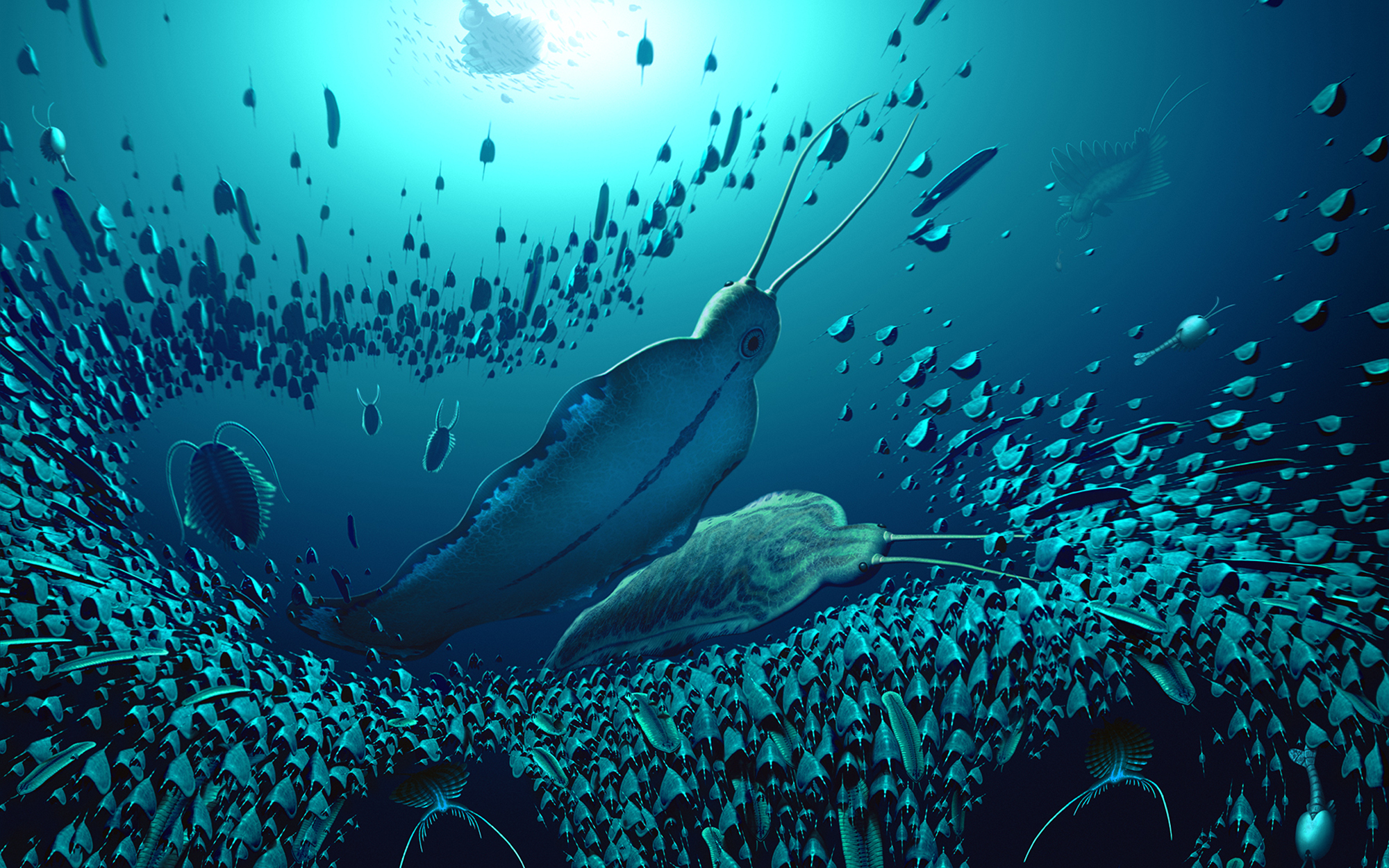

The nearly half a billion year old remains of some enormous and extinct carnivorous worms have been discovered near the top of the world by an international team of researchers. The ancient creature named Timorebestia, or ‘terror beasts’ in Latin, lived in the water column of North Greenland over 518 million years ago. The new fossils indicate that the worms had fins on the sides of their bodies, a head with a long antenna, and enormous jaw structures on the insides of their mouth. They could grow to almost 12 inches long. These were some of the largest swimming animals of the Early Cambrian period and are described in a study published January 3 in the journal Science Advances.
[Related: A three-eyed organism roamed the seas half a billion years ago.]
An ‘explosion’ of life
When these terror beasts were alive over 500 million years ago, the Earth was undergoing a major expansion of life called the Cambrian Explosion. This is when most major groups of animals first appear in the fossil record, partially due to cooler temperatures and tectonic changes. All of this biological diversification also occurred in a relatively short period of time–in about 30 million years.
The Timorebestia fossils were found during a 2017 expedition to the Early Cambrian Sirius Passet fossil locality in a very remote section of North Greenland. Timorebestia may be some of the earliest carnivorous animals to have colonized the water column here and reveal a past potential dynasty of predators that were previously unknown to scientists. Early arthropods were known to be the dominant predators during the Cambrian period, including some “weird shrimp from Canada” called anomalocaridids.
“Our research shows that these ancient ocean ecosystems were fairly complex with a food chain that allowed for several tiers of predators,” study co-author and University of Bristol paleontologist Jakob Vinther said in a statement. “Timorebestia were giants of their day and would have been close to the top of the food chain. That makes it equivalent in importance to some of the top carnivores in modern oceans, such as sharks and seals back in the Cambrian period.”
Timorebestia is also a distant but close relative of living arrow worms called chaetognaths. These worms are much smaller than today’s enormous ocean predators and only eat zooplankton, a far cry from their apex predator days of the past.
Opening a 518 million-year old digestive system
The fossils from the Sirius Passet were exceptionally well preserved so the team was able to study the remains of their muscle anatomy, nervous systems, and digestive systems very closely. When they looked inside Timorebestia’s fossilized digestive system, they found the remains of a common, swimming arthropod called Isoxys.

“We can see these arthropods was a food source [for] many other animals,” study co-author and University of Bristol paleontologist Morten Lunde Nielsen said in a statement. “They are very common at Sirius Passet and had long protective spines, pointing both forwards and backwards. However, they clearly didn’t completely succeed in avoiding that fate, because Timorebestia munched on them in great quantities.”
While arthropods like Isoxys appear in the fossil record about 521 to 529 million years ago, modern living arrow worms can be traced back at least 538 million years. Since arrow worms and these more early Timorebestia were swimming predators, the team believes that they dominated the oceans before arthropods took off. Their dynasty may have lasted about 10 to 15 million years before they were superseded by other groups of marine predators.
Jaw predator evolution
The discovery of Timorebestia is also helping paleontologists understand where jawed predators came from. The arrow worms living today have bristles on their heads for catching prey, instead of having jaws inside of its head like Timorebestia. By comparison, today’s microscopic jaw worms have an oral setup that is more similar to Timorebestia, so arrow worms and jaw worms likely shared an ancestor over half a billion years ago.Timorebestia and some of the other specimens that the team found on this expedition are revealing the evolutionary links between organisms that may look different, but are closely related. It is also helping paint a better picture of how arrow worms evolved over hundreds of millions of years.
[Related: A 500-million-year-old sea squirt is the evolutionary clue we need to understand our humble beginnings.]
“Living arrow worms have a distinct nervous center on their belly, called a ventral ganglion. It is entirely unique to these animals,” study co-author and Korean Polar Research Institute paleontologist Tae Yoon Park said in a statement. “We have found this preserved in Timorebestia and another fossil called Amiskwia. People have debated whether or not Amiskwia was closely related to arrow worms, as part of their evolutionary stem lineage. The preservation of these unique ventral ganglia gives us a great deal more confidence in this hypothesis.”
The team collected a wide variety of organisms during the expedition and plan to continue to study these specimens to learn more about how the planet’s earliest animal ecosystems evolved.
